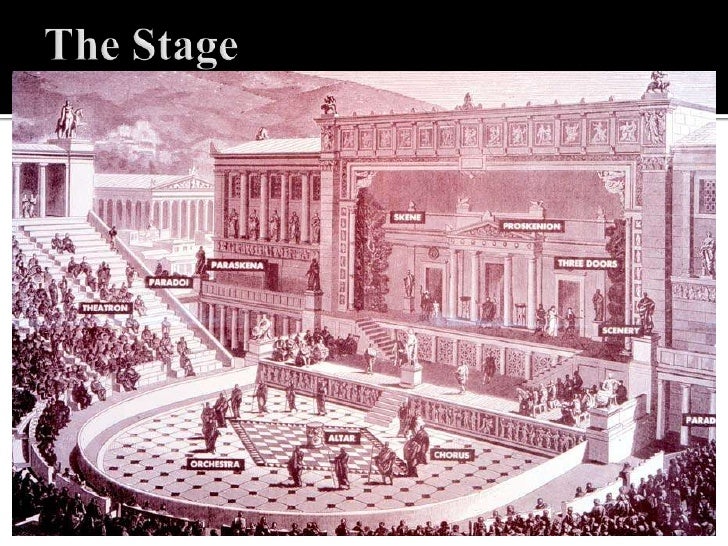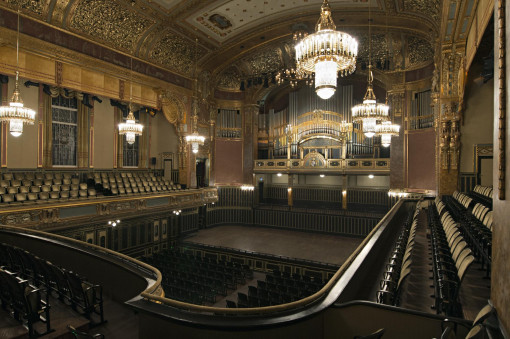THE ORCHESTRA
I

n Ancient Greece the orchestra was a semicircle shaped place where the choir sang and danced, while the actors were located behind, in the scene.
En la Antigua Grecia, la orquesta era un lugar con forma de semicírculo donde el coro cantaba y bailaba, mientras los actores se colocaban detrás, en el escenario.
In the 16th century, the orchestras were formed by few instruments and used to give concerts in the rooms or chambers of the palaces; that's why they were called chamber orchestras. The conducting of the orchestra was made by the composer or the first violin.

In Mozart’s and Beethoven’s times, more wind and percussion instruments were incorporated, and the symphony orchestra was born. The first concert halls for large orchestras and many spectators also appeared. The figure of the conductor appeared.
In an orchestra, the instruments are distributed according to their family and their sound power. The percussion, which can play loudly, is at the bottom; the string, with a quieter sound, in front. The wind instruments are placed in the middle.
La percusión, que puede tocar fuerte, al fondo; la cuerda, con un sonido más suave, delante. Los instrumentos de viento, en medio.
Hoy en día, los compositores a veces incluyen instrumentos modernos en la orquesta.




